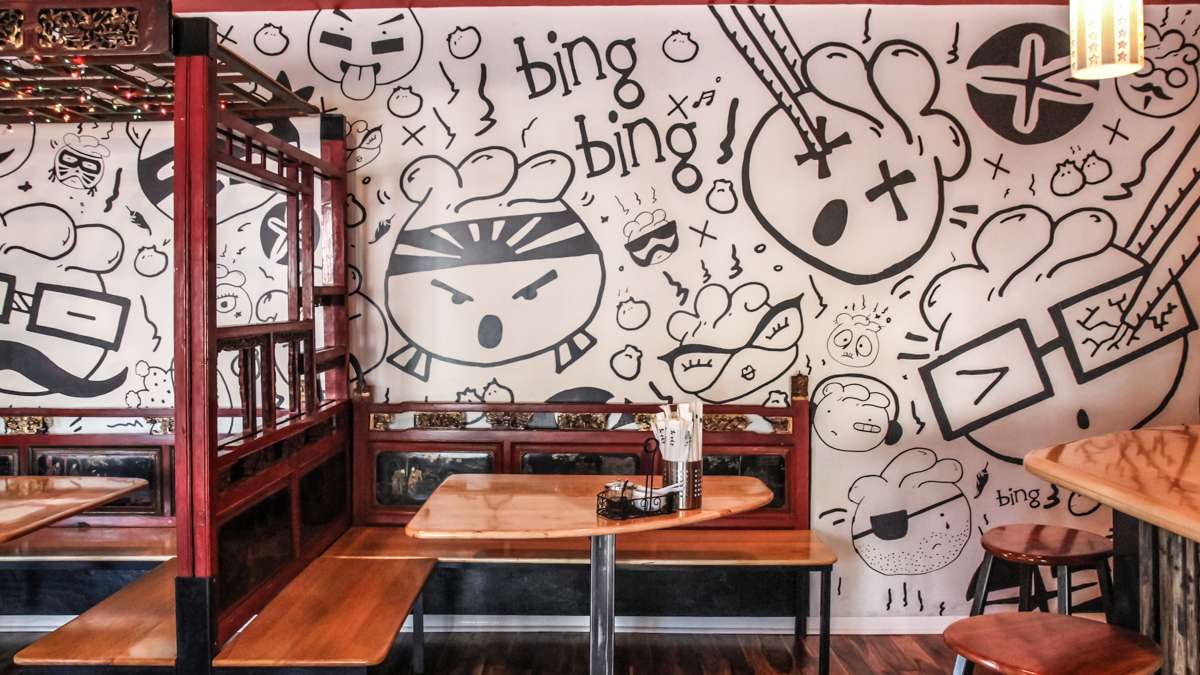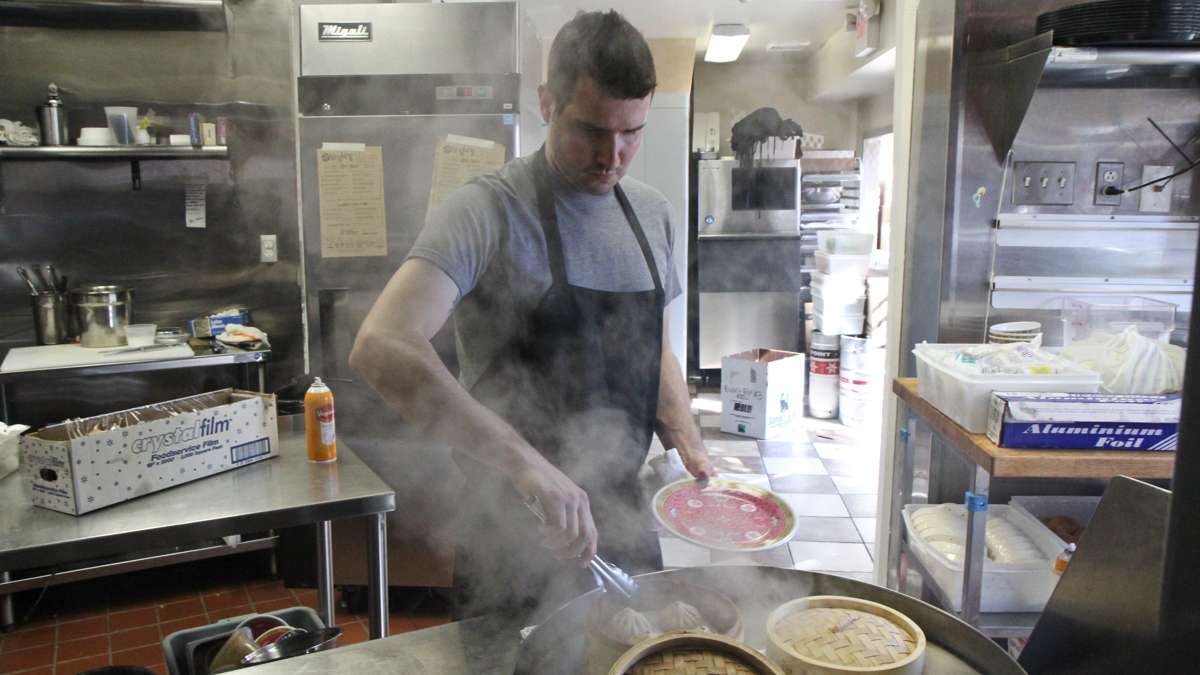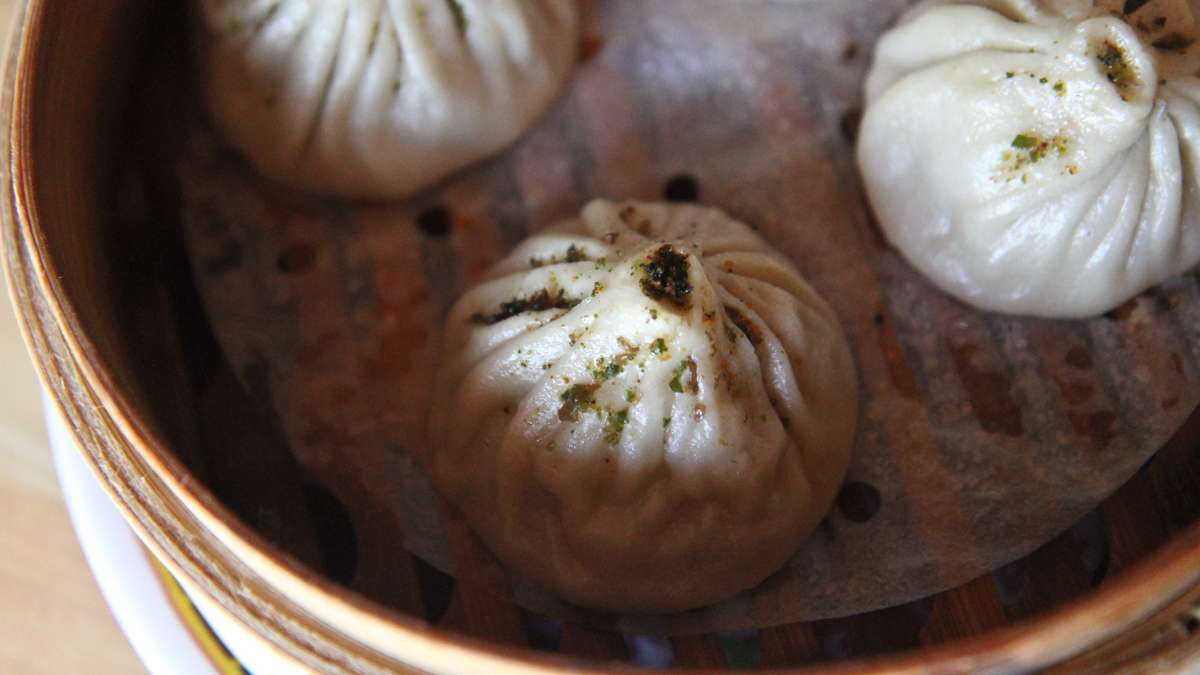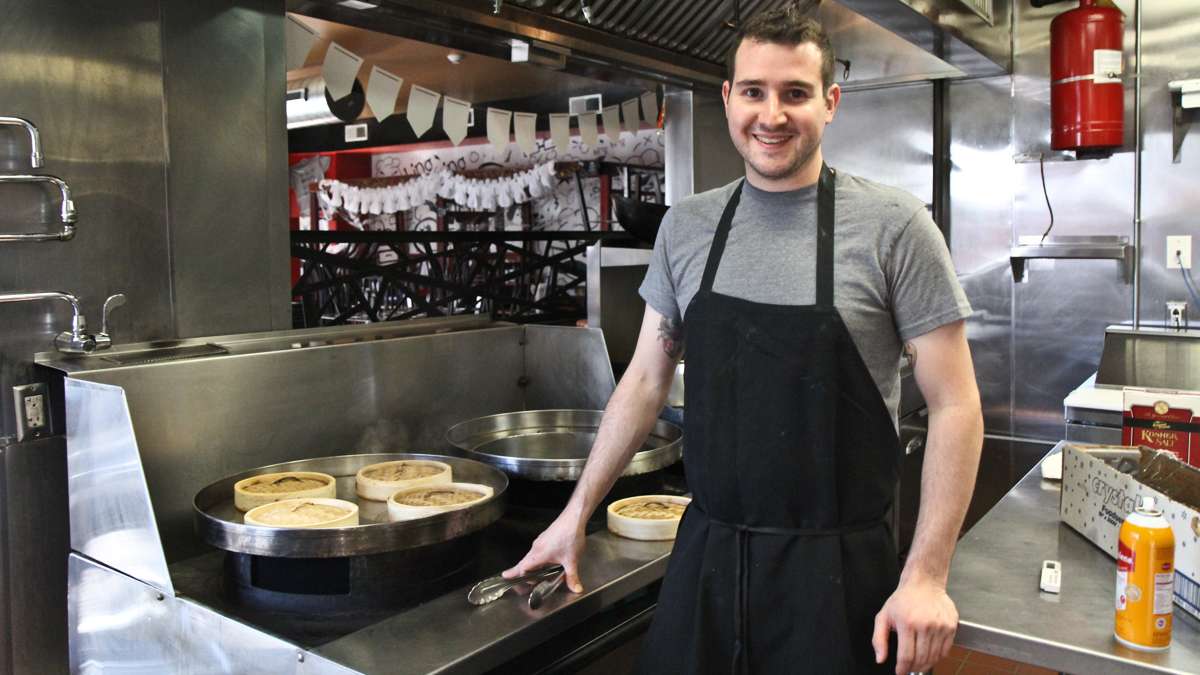The secret of the soup dumpling [photos]
How do they put the soup inside the dumpling?
That was Jack Chen’s first memory of eating the traditional Shanghai steamers … asking how it was done.
Sitting at a brightly lit window-side table at Sakura Mandarin, his Chinatown restaurant, Chen picked a ceramic teapot up by its bamboo handle and poured a round of tea.
“Philadelphia is right now becoming a haven of dumplings,” he said. “Including soup dumplings.”
Many of the 66 restaurants in Chinatown sell the soup dumplings. But their doughy allure has now reached beyond traditional boundaries. And with culinary interest fully piqued, interpretation is never far behind.
The learning curveThe soup dumpling is the reason Chef Ben Puchowitz of Cheu Noodle Bar and Bing Bing Dim Sum got into the dumpling game in the first place. It was 2011 and he couldn’t get enough. He kept trying different places, but he still couldn’t replicate them.
“That was kind of the whole challenge of it,” Puchowitz said. “I tried so many times to make them and I was like, I don’t understand, there’s got to be some secret that I’m missing.”
Like many successful chefs, Puchowitz kept trying, trying and trying again. And there was no one to ask for advice.
“No one would let Ben into their kitchen,” said Puchowitz’s business partner, Shawn Darragh. “Not even friends.”
So the test kitchen science experiments continued.
Puchowitz tried different flour combinations. He tried using hot water when making the dough. He tried using cold water. He just couldn’t get it right.
“I was always amazed at how they did it,” Puchowitz said. “And no one let the secret out. No one was telling me how it was possible.”
The problem is, there really isn’t a complete base recipe to work from. No starting ground. At least not one coming from another chef.
Kitchen cultureThat’s because this ancient Chinese recipe isn’t up for discussion — or demonstration.
Puchowitz went to a couple restaurants to see if he could just hang out in the kitchen. They either said “no” right away or gave him the runaround. He got about as far as talking to a manager. They’d take his number down and tell him they’d call him back.
“They never called me back,” he said.
And this wasn’t just in Philadelphia. These were contacts he had up in New York kitchens, too.
Puchowitz even reached out to a restaurant owner in Portland, Maine. He thought that kitchen visit was definitely going to happen, since he wouldn’t be posing any risk of competition. But even she said no.
The cooks in the kitchen don’t like outsiders, he was told. And, again, hanging out in the kitchen was out of the question.
“They all have an excuse,” Puchowitz said. “And I think the overall reason is that they don’t really care to share. And I don’t blame them.”
The problem with volumeWhen a new restaurant opens, the owners hardly ever know what’s in store. No matter their level of experience, there’s really no telling how they will be received. But with constant media buildup and anticipation come expectation.
With a series of pop-ups behind them, Darragh and Puchowitz opened Cheu Noodle Bar, and excitement was high. Two years later, and they’re still hosting 180 to 300 people or more a day at a 24-seat restaurant. By the time they opened Bing Bing, their second restaurant, nearly 10 months ago, the frenzy had reached a fever pitch.
The problem with volume is you have to be prepared. And nothing, apart from a couple of years behind the stove at a Starr model restaurant (which they didn’t have) could have prepared them for the onslaught of customers and the demand for dumplings that they had created.
“We make sheet trays and sheet trays and endless sheet trays of dumplings,” Darragh said.
They have a team of “dumpling girls,” most with a background in pastry, working day and night to turn out 25 to 30 trays of dumplings daily.
“I didn’t realize how the margin of error is extremely large,” said Puchowitz.
When he started doing all the dumplings, he’d just say, “Do it like this.” But without weighing each one, without telling his team exactly the amount of filling to use weighed out in grams, each dumpling would turn out totally different.
While challenges like kitchen design, storage space, and sheer demand still plague this Passyunk Avenue hot spot, Puchowitz and Darragh have gotten things pretty streamlined.
The secretThe soup dumpling’s most recent spike in popularity has been spurred by the Philly foodie’s seemingly insatiable appetite for traditional Asian fare. But for Jack Chen, it’s more than just a fad. It’s his business. And a time-honored cultural tradition.
“Indeed, there is a long history for soup dumplings,” Chen said. “For the past thousand years, they tried as a secret recipe, to pass on from the old, old grandfather to the grandson.”
It’s been 10 years since Chen founded Dim Sum Garden; eight since he opened Sakura Mandarin. Which means Chen has been serving soup dumplings longer than most of us have been eating them. But when it comes to the recipe, that’s a secret he’s not willing to share, and doesn’t really completely even know.
“There are some things I’m still not 100 percent sure because it’s still chef that makes it,” he said. “I know most of the ingredients, and most of the steps.”
But maybe that is the secret. The little tricks each house has learned and each chef has accumulated. The soup dumpling is a point of pride. Even the recipes online, of which there are many, don’t teach you everything there is to know.
Eventually, even Puchowitz has gleaned enough tips to nail down a basic recipe. And it’s a good thing as the soup dumplings have proved to be Bing Bing’s pièce de résistance, selling anywhere from 30 to upwards of 100 orders a day.
Still interested in the secret recipe? Bon Appetit offers a quick-paced yet complicated video tutorial which begins by putting a pig’s foot into a saucepan. If you’re interested, try a DIY project yourself.
Me? I’ll leave it to the professionals.
WHYY is your source for fact-based, in-depth journalism and information. As a nonprofit organization, we rely on financial support from readers like you. Please give today.














